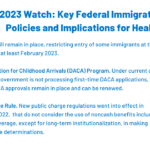As the costs of education continue to rise, many families and students are seeking effective ways to manage these expenses. A tax-free savings account designated solely for educational expenses offers an attractive solution. This account allows individuals to save money without the burden of taxes, provided the funds are used for qualified educational costs. This article delves into the features, benefits, and considerations surrounding tax-free savings accounts for educational expenses.
What is a tax-free savings account for educational expenses?
A tax-free savings account for educational expenses is a financial product that allows individuals to set aside money specifically for qualifying education costs. Earnings on the saved funds grow tax-free, provided they are used for eligible expenses such as tuition, books, and other necessary supplies.
Key Features of Tax-Free Savings Accounts
Tax-free savings accounts for educational expenses come with several key features, making them an attractive option for families planning for educational costs:
- Tax Advantages: Contributions to the account can grow without being subject to federal taxes. Withdrawals used for eligible educational expenses are also tax-free.
- Flexible Contribution Limits: Depending on the specific type of account, contribution limits can vary. For example, a Coverdell Education Savings Account (ESA) allows contributions of up to $2,000 per year per beneficiary.
- Wide Range of Eligible Expenses: Funds can be utilized for a plethora of educational costs, including tuition, room and board, required supplies, and even student loan repayments in certain scenarios.
- Account Ownership: The account can be opened by parents or guardians on behalf of a child, or by the student themselves once they reach a certain age.
- Portability: The account can usually be transferred between eligible educational institutions without incurring penalties.
Types of Tax-Free Educational Savings Accounts
There are several types of accounts designated for educational savings, including:
- 529 Plan: This is a popular savings plan that offers tax-free growth and tax-free withdrawals for qualified education expenses. There are two types of 529 plans: prepaid tuition and education savings plans.
- Coverdell Education Savings Account (ESA): This account also provides tax-free growth and offers greater flexibility in investment choices compared to 529 plans but has lower contribution limits.
The following table summarizes the key differences between these two types of plans:
| Feature | 529 Plan | Coverdell ESA |
|---|---|---|
| Contribution Limit | Varies by state, often exceeds $300,000 | $2,000 per year per beneficiary |
| Qualified Expenses | Tuition, room, board, supplies, K-12 expenses | Tuition, supplies, K-12 expenses |
| Investment Options | Limited to plan’s selections | Broad investment choices |
| Age Restrictions | None for contributions; funds must be used by age 30 | Must be used by age 30 |
Benefits of Using a Tax-Free Savings Account for Educational Expenses
The advantages of utilizing such accounts are significant. Families can maximize their savings through tax-free growth and avoid immediate tax liabilities. Additionally, these accounts often encourage disciplined saving habits, as funds specifically earmarked for education may help motivate families to prioritize educational goals.
Recent data shows that families utilizing tax-free savings accounts save on average 25% more for education than those who do not. This underscores the effectiveness of these accounts in financial planning for education.
How to Open a Tax-Free Savings Account for Education
Opening a tax-free savings account for educational expenses involves several straightforward steps:
- Determine Eligibility: Ensure the account type is appropriate for your needs and meets IRS guidelines.
- Select Financial Institution: Research various banks or financial institutions that offer educational savings accounts. Compare fees, investment options, and performance history.
- Complete Application: Fill out the required application forms and provide any necessary documentation, including identification and tax information.
- Make Initial Contribution: Fund the account with an initial contribution, adhering to the contribution limits.
- Monitor and Adjust: Regularly review account performance and contributions to stay on track with educational savings goals.
Considerations and Limitations
While tax-free savings accounts offer many benefits, there are important considerations to keep in mind:
- Penalties for Non-Qualified Withdrawals: Using funds for non-educational expenses can lead to tax implications and penalties.
- Contribution Limits: Each account type has specific contribution limits, which may constrain saving practices for higher education.
- Investment Risks: Depending on the account type, investments may be subject to market fluctuations.
- State Variations: States may impose their own rules and benefits for 529 plans, which can impact the decision to open an account.
Conclusion
A tax-free savings account for educational expenses serves as a robust tool for families seeking to finance education without incurring tax liabilities. By understanding the various types of accounts, their benefits, and the necessary steps to open one, families can make informed decisions that align with their educational savings goals. As education costs continue to rise, the importance of strategic financial planning becomes increasingly evident. Families who leverage these accounts can navigate the financial demands of education more effectively, setting a foundation for future success.
In summary, investing in educational expenses through a tax-free savings account provides a smart pathway to achieving educational aspirations while maximizing savings potential. Families are encouraged to explore their options and take proactive steps in securing their educational futures.




